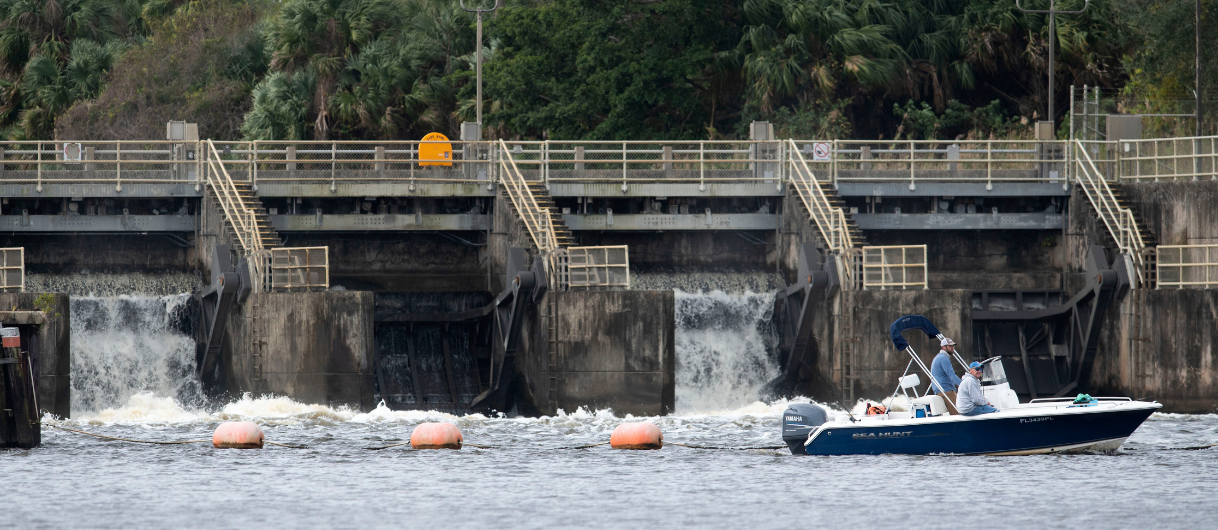Will the EAA reservoir work as advertised? It had better
Will the EAA reservoir work as advertised? It had better

They came from all over Florida: Public officials, political appointees from both the state and federal government, even Big Sugar sent an emissary.
The goal: To proclaim a new day dawning, one marked by clean water and prosperity as far as the eye can see.
For the new Everglades Agricultural Area Reservoir is going to change everything.
And after all the fanfare — it had better.
Indeed, the groundbreaking ceremony for the 10,500-acre reservoir resembled a touchdown dance. The reservoir and its attendant 6,500-acre stormwater treatment area aren’t merely significant components of Everglades restoration; those at the event called it the “crown jewel” of restoration, the “critical lynchpin,” a “game changer” and “most impactful” of all restoration projects.
Thanks to the reservoir and other projects now in the works, “South Florida is poised to thrive for decades to come,” said Florida’s Chief Resilience Officer Wes Brooks.
Then there was former Florida Senate President Joe Negron, who shepherded Senate Bill 10 through the legislature back in 2017, paving the way for the reservoir. “Today my constituents and friends in Martin County and the Treasure Coast won an enormous environmental victory,” said Negron. “The days of ruinous discharges from Lake Okeechobee will soon be a relic of the past.”
Ahem.
First, the reservoir will not, in fact, end ruinous discharges. Even if the reservoir operates at full capacity — and a recent National Academies of Science report cast serious doubt on whether that will happen — neither the reservoir, nor the new Lake Okeechobee System Operating Manual, will end discharges. Discharges are expected to be reduced, but we won’t know by how much until we get there.
Second, there remain significant questions about the size of the reservoir, its depth and whether, in fact, it will work as advertised. Another large reservoir the Army Corps is building in western Martin County, the C-44 Reservoir, is experiencing “seepage” that so far is preventing it from operating as intended. The EAA Reservoir will be much bigger and deeper. These are massive engineering feats, and they are not without risk.
Some of those now singing the praises of the reservoir once harbored significant doubts about it. What changed? That’s an interesting question.
But suffice to say that if, after all the hyperbole, the U.S. Army Corps of Engineers spends $4 billion to construct this project and the initial doubts turn out to have been prescient — Florida will have a stupendous problem on its hands.
But even if the reservoir lives up to the hype, and water managers are somehow able to meet the water quality standards that will allow the reservoir to operate at full tilt, we haven’t solved the problem of harmful discharges to the St. Lucie and Caloosahatchee estuaries. Only when we procure additional land to store additional water and end the discharges once and for all.
And there seems to be no acknowledgement of this. Some state officials have breezily acknowledged that yes, we’re going to need more land south of Lake Okeechobee; but there are no legislative proposals for this, Gov. Ron DeSantis has not spoken of it. It is simply not on the agenda.
So we get the temptation to celebrate the reservoir’s groundbreaking. Too often, clean water advocates come away from our water wars with nothing. Here, we got something.
But it’s not enough; in football terms, we scored, danced, took a selfie and leaped into the stands. But we’re still down by several scores.
And if you did that in a real football game, your coach would have a few things to say once you got back to the sidelines. And we’d say the same:
Great. But we’re still behind.
So let’s get back to work.


